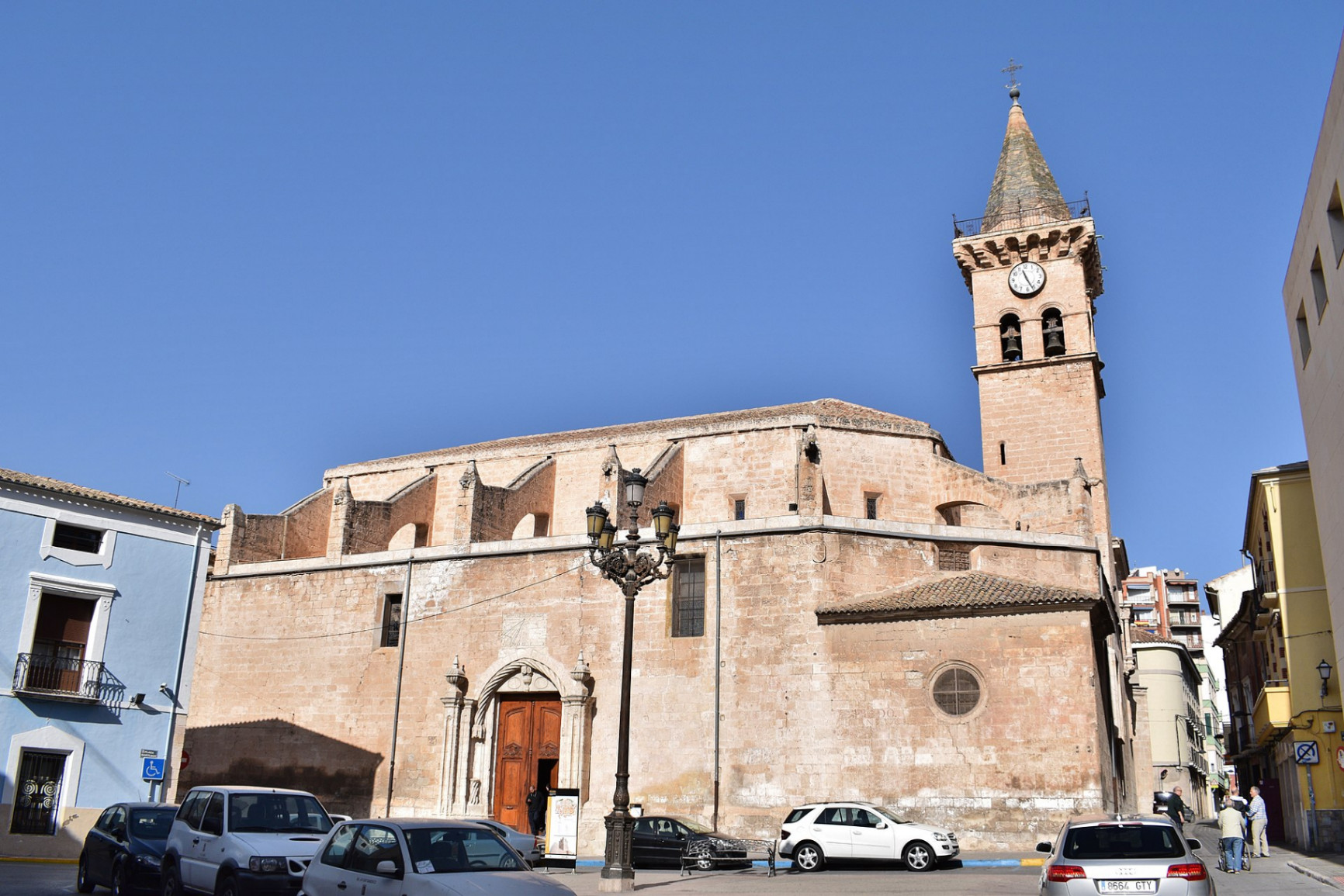Countries<Spain<Comunidad Valenciana<Villena< Iglesia Arciprestal de Santiago
It is one of the most important Gothic-Renaissance complexes in the Valencian Community, as it is the archetype of the Valencian Gothic architectural school that had a wide regional resonance.
Its plan with three naves and its torsal columns, similar to those of the Lonjas of Valencia and Mallorca, can be considered typical of the Gothic style, as well as being the oldest ever built in a religious building.
It is known that in the middle of the 15th century there was already a temple dedicated to Santiago, of small proportions and considerably narrow. Shortly before 1492, under the patronage of the illustrious Villena de Medina family, the first phase of the extension began and was completed around 1510.
The enlargement continued throughout the 16th century, when the most outstanding Renaissance elements of the church were introduced, such as the access door to the sacristy and the chapterhouse, the baptismal font and the two windows on the first floor of the tower, all in the Murcian tradition and attributed to Jacobo Florentino and Jerónimo Quijano.
During the Civil War, the church suffered a great deal of damage. The main altar railing was mutilated, the organ was destroyed, all the images, paintings, ornaments and objects of worship disappeared, and almost all the chapter books, parish registers and the music archive were lost. In the 1950s the choir loft was removed and the choir platform was demolished. Instead, several chapels and the pulpit were rebuilt. The church was declared a National Historic-Artistic Monument in 1931.
Se trata de uno de los conjuntos gótico-renacentistas más importantes de la Comunidad Valenciana, dado que conformó el arquetipo de la escuela arquitectónica del gótico valenciano que tuvo amplia resonancia regional.
Su planta de tres naves y sus columnas torsas, similares a las de las lonjas de Valencia y de Mallorca se pueden considerar típicas del gótico, además de ser las más antiguas construidas en un edificio religioso.
Se sabe que a mediados del siglo XV ya existía un templo bajo la advocación de Santiago, de proporciones reducidas y considerablemente estrecho. Poco antes de 1492, con el patronazgo de la ilustre familia villenense de Medina se inicia la primera fase de la ampliación que acabaría hacia 1510.
La ampliación que continuó a lo largo de todo el siglo XVI, introduciéndose en este momento los elementos renacentistas más destacados de la iglesia tal como son la puerta de acceso a la sacristía y el aula capitular, la pila bautismal y las dos ventanas del primer piso de la torre, todo ello de tradición murciana y atribuido a Jacobo Florentino y a Jerónimo Quijano.
Durante la guerra civil la iglesia sufrió numerosos daños. Se mutiló la verja del altar mayor, se destruyó el órgano, desaparecieron todas las imágenes, cuadros, ornamentos y objetos de culto y se perdieron casi todos los libros capitulares, los registros parroquiales y el archivo musical. En los años 50 se eliminó el coro y se derribó la plataforma del coro. En cambio, se reconstruyeron varias capillas y el púlpito. La iglesia fue declarada Monumento Histórico-Artístico Nacional en 1931.
